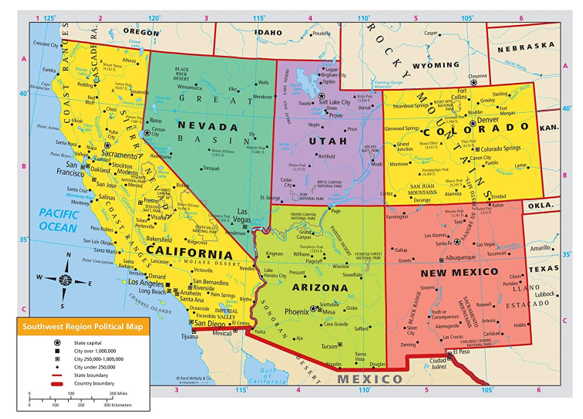 Deadweight loss, also known as excess burden, is a cost to society created by market inefficiency. It occurs when supply and demand are out of equilibrium. Mainly used in economics, it can be applied to any deficiency caused by an inefficient allocation of resources.
Deadweight loss, also known as excess burden, is a cost to society created by market inefficiency. It occurs when supply and demand are out of equilibrium. Mainly used in economics, it can be applied to any deficiency caused by an inefficient allocation of resources.
Here is how Wikipedia defines deadweight loss:
A measure of lost economic efficiency when the socially optimal quantity of a good or a service is not produced. Non-optimal production can be caused by highly concentrated wealth and income (economic inequality), monopoly pricing in the case of artificial scarcity, a positive or negative externality, a tax or subsidy, or a binding price ceiling or price floor such as a minimum wage.
One way we can think of the education reform movement is to view it as an attempt to lessen an artificial scarcity of different school models. Left to their own devices, teachers and families might develop all sorts of different schools.
The development of the American public-school system involved a local, publicly funded monopoly, widespread standardization, and regulatory capture. The K-12 choice movement has changed this in a limited way.
Only a tiny handful of state charter school laws have grown robust enough to provide tension in the system. The same would be the case if charters, private choice, and homeschooling practices are considered in combination. Ergo, deadweight loss in K-12 education, with an artificial scarcity of diverse schools, endures.
Two studies ranked cumulative choice. The first debuted in 2000 and was followed by another study 20 years later. Arizona ranked first in both studies.
The Arizona of 2000, with a liberal but still small charter sector and a single, small private choice program, seems quaint by today’s standards. To maintain the No. 1 ranking, Arizona lawmakers expanded the nation’s first scholarship tax credit, created three new ones, passed the first education savings account program, and created a charter school sector that currently educates 22% of public-school students.
Perhaps most consequential, Arizona’s choice programs induced a very active open enrollment process within and between school districts.
The Educational Opportunity Project at Stanford University linked state testing data across all 50 states, with current data covering 2008-18 for grades 3-8. The chart below compares Arizona with its five border states – California, Colorado, Nevada, New Mexico and Utah – showing academic growth for poor and non-poor students.
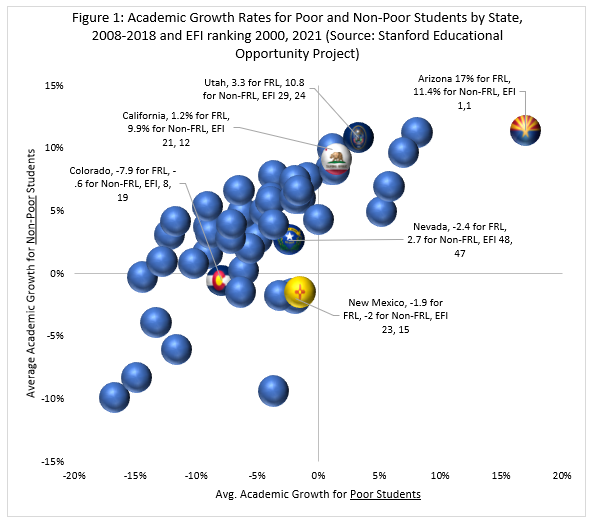 These states have demographic similarities, and all have been marked by the large increase in Hispanic students over the past 40 years.
These states have demographic similarities, and all have been marked by the large increase in Hispanic students over the past 40 years.
A noteworthy point: California has the second highest EFI rating in the Southwest. California’s large charter sector has a lot to do with this, but sadly, politics recently have surfaced to create an artificial shortage of seats.
Figure 2, below, presents the same Stanford data:
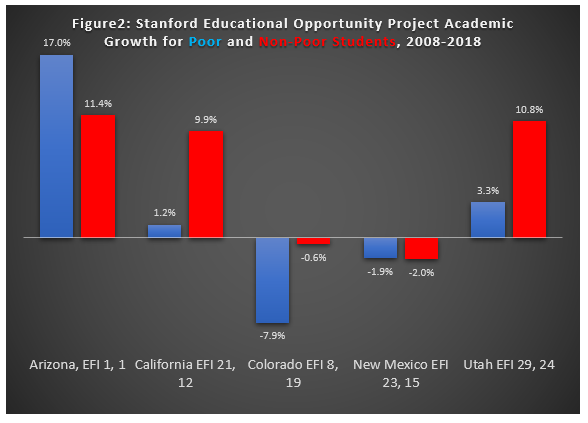 The Education Freedom Index studies demonstrated a statistical association between education freedom scores and academic trends. The Stanford data shows that although Arizona has the highest rate of academic growth for middle/high income students, there are a few other states in their neighborhood, including California and Utah.
The Education Freedom Index studies demonstrated a statistical association between education freedom scores and academic trends. The Stanford data shows that although Arizona has the highest rate of academic growth for middle/high income students, there are a few other states in their neighborhood, including California and Utah.
When it comes to academic growth for low-income students, Arizona has no peer either inside or outside of the Southwest. We don’t fully understand what drives academic growth, but outside the very active system of choice, Arizona’s K-12 policies are fairly typical, and the state’s student demographics are not wildly different from neighboring states.
So, what is so different about the K-12 system for low-income kids in Arizona? In a word: access.
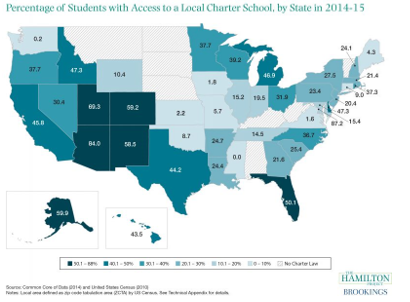 Poor children in Arizona have greater access to charter schools. They also have access to leafy suburban districts:
Poor children in Arizona have greater access to charter schools. They also have access to leafy suburban districts:
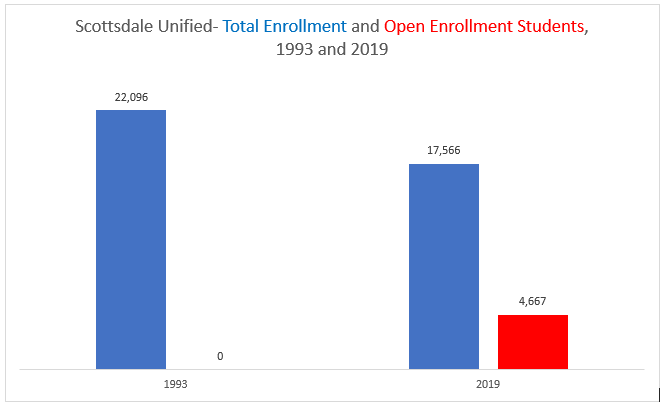 The 9,000 students who live within the boundaries of Scottsdale Unified but attend school elsewhere probably have a great deal to do with the access provided to the open enrollment kids. Just as a reminder of how unusual this is, see if you can locate the fancy suburb in Ohio participating in open enrollment at all:
The 9,000 students who live within the boundaries of Scottsdale Unified but attend school elsewhere probably have a great deal to do with the access provided to the open enrollment kids. Just as a reminder of how unusual this is, see if you can locate the fancy suburb in Ohio participating in open enrollment at all:
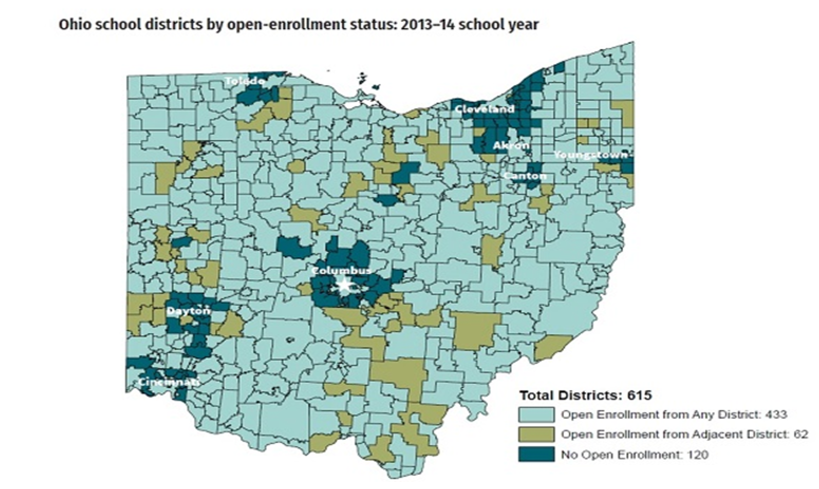 Finally, four different scholarship tax credit programs and the Empowerment Scholarship Account program increase the accessibility of low-income families (and others) to attend private schools. It appears to me that with access comes accountability: charters with low demand close quickly. District schools with low demand persist longer, shuffling along before eventually being closed.
Finally, four different scholarship tax credit programs and the Empowerment Scholarship Account program increase the accessibility of low-income families (and others) to attend private schools. It appears to me that with access comes accountability: charters with low demand close quickly. District schools with low demand persist longer, shuffling along before eventually being closed.
This is far from ideal, as zombie schools draw resources from other schools in the same district.
Rationally, districts should expand high-demand schools and close low-demand schools. While politics rather than reason rules the affairs of districts in Arizona and elsewhere, the incentives are pointed in the right direction.
Arizona families seem pretty good at picking schools with which to entrust with their children. Meanwhile, rather than viewing high-demand schools as a fixed and scarce asset, Arizona policies have created incentives for educators to open new ones.
As these circumstances unfolded over time, deadweight loss lessened. The kids who start with the least gained the most from this process. Let there be more of it.


